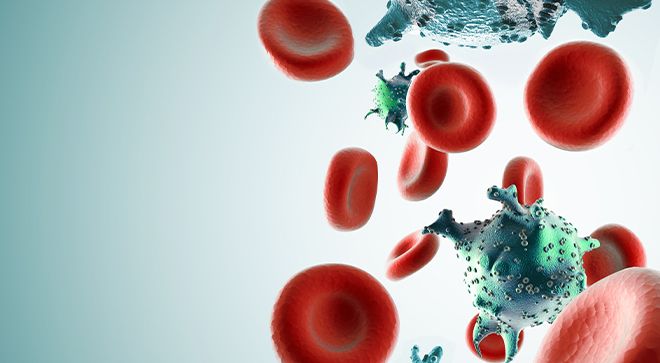Article
High-Frequency, Low-Dose Calquence-Rituxan Combo May Elicit Safe Responses in Previously Untreated CLL/SLL
Author(s):
The combination of Calquence and Rituxan may also be useful during the COVID-19 pandemic as it decreases infusion times and patient interactions, according to an expert.
Calquence (acalabrutinib) and Rituxan (rituximab) given at a high frequency and low dose demonstrated to be tolerable and effective in patients with previously untreated chronic lymphocytic leukemia/small lymphocytic lymphoma (CLL/SLL), according to recent results.
All 37 patients enrolled responded to the combination; however, one patient had a complete response (or the disappearance of detectable cancer) but tested positive for minimal residual disease (a small number of cancer cells that remain after treatment; MRD), said lead study author Dr. Danielle S. Wallace in a presentation of the results at the 2021 ASH Annual Meeting.
In addition, she said the regimen has advantages that could prove useful during the COVID-19 pandemic.
“This at-home combination decreased infusion time and patient interactions during the pandemic,” said Wallace, a second-year fellow at Wilmot Cancer Institute at the University of Rochester Medical Center in New York. “This regimen has the potential to enable (Rituxan) to be administered at facilities with limited medical intravenous infusion capacity, which could be very useful in rural and economically disadvantaged areas.”
At a median follow-up of 14 months, 27 patients (73%) have completed at least 12 cycles of therapy. In addition to the one patient (2.7%) with a complete response but positive peripheral blood test, there were 20 partial responses (a decrease in tumor size or the amount of cancer in the body as a response to treatment; 54%) and six partial responses with sustained lymphocytosis (white blood cells; 16%).
“To date, 10 patients have completed 24 cycles, and all were in sustained (partial responses) at the time of their response assessment,” she said. One patient with both a del(17p) and TP53 mutation (often indicative of faster progression of the disease) has had progressive disease following 25 cycles of therapy.
CD20 antibodies such as Rituxan primarily destroy B cells by activating the immune system. Standard doses of Rituxan given at specific intervals may be less effective in CLL than a high-frequency, low-dose regimen because “higher doses result in rapid exhaustion of the finite mechanisms of the innate immune system, via a reduction in phagocytosis and loss of CD20 expression due to trogocytosis,” said Wallace. This means that the immune system is tired from a higher dose due to a reduced ingestion of bacteria and loss of CD20 expression from cells nibbling other cells.
In earlier lines, in which Rituxan was given two to three times a week at lower doses, loss of CD20 was not significant, she said, “supporting further trials of high frequency low-dose (Rituxan).” The subcutaneous (administered under the skin, allowing for slower absorption) dosing of Rituxan that is approved in CLL is more convenient and preferable to patients, allowing the drug to be administered in the patient’s home.
The median age of patients in the trial was 67 years and 60% were men. Patients enrolled were relatively high risk, she said, with 70.2% having at least one high-risk feature, including 21.6% with a TP53 mutation and 13.5% with del(17p).
“While all patients have responded to therapy, no patients to date have achieved an undetectable MRD- (complete response), suggesting that additional agents are required to allow for time-limited therapy,” Wallace said.
Regarding safety, severe side effects occurring in at least 5% of patients included infections (13.5%), neutropenia (low white blood cell count; 8.1%) and anemia (8.1%). The most common side effects were infusion-related reactions (62.1%), infections (56.8%), fatigue (51.3%), anemia (51.3%), headache (43.2%), rash or other skin changes (32.4%), low blood platelet count (29.7%), upper respiratory infections (29.7%), urinary tract infections (18.9%), COVID-19 pneumonia (8.1%), bruising (27%) and diarrhea (21.6%). None of the patients who contracted COVID-19 pneumonia required intubation and all remained on Calquence during their infection.
All infusion reactions occurred during the second hour of infusion, and none required discontinuation of Rituxan. Subsequently, only three patients had injection site reactions with subcutaneous dosing. There were 11 serious side effects, the majority of which were infections. No deaths occurred on treatment.
A version of this article originally OncLive as “High Frequency Low-Dose Acalabrutinib/Rituximab Combo Elicits 100% ORR in Frontline CLL/SLL.”
For more news on cancer updates, research and education, don’t forget to subscribe to CURE®’s newsletters here.





